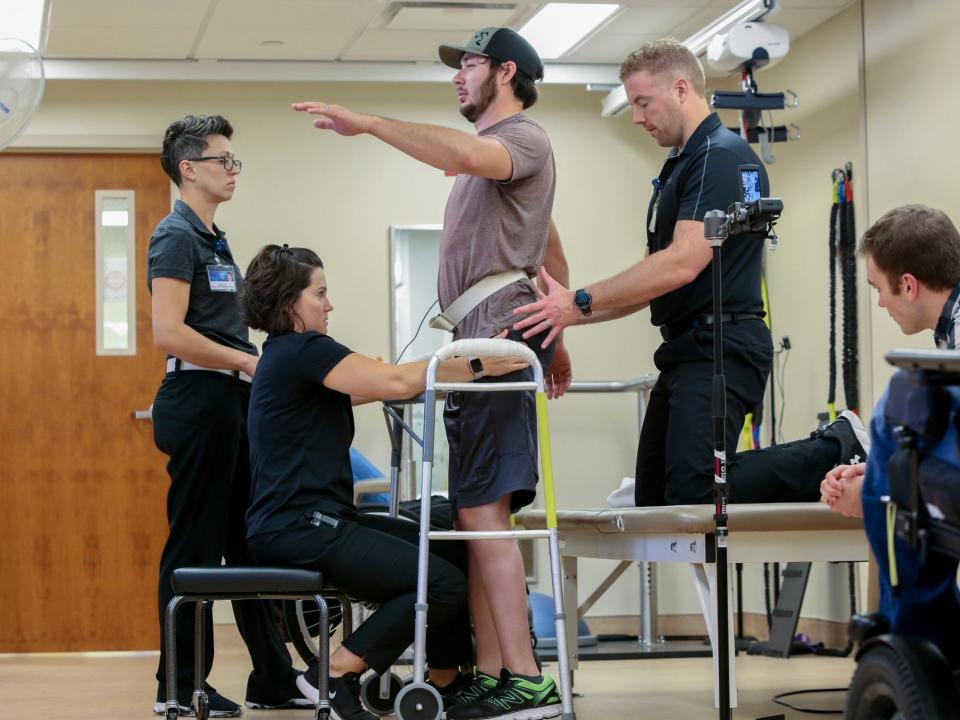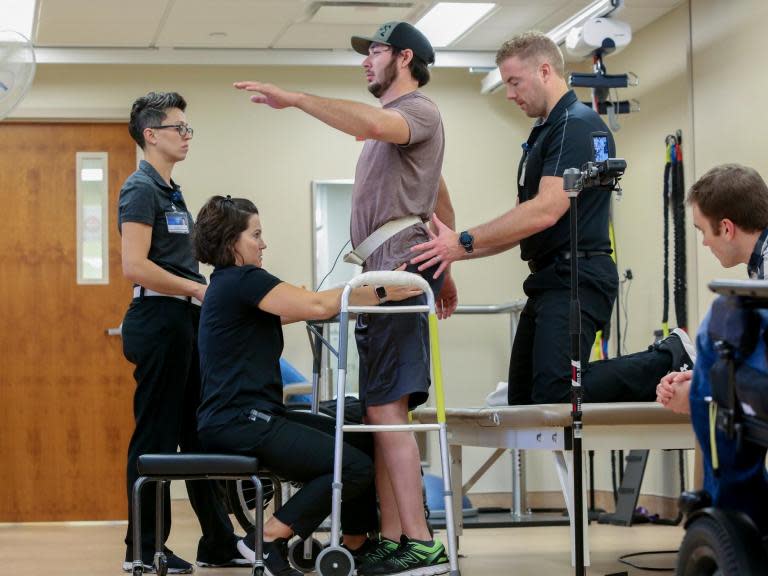Man paralysed from waist down makes history by walking again using mind-controlled implant to power his legs
A 29-year-old man who was paralysed from the waist down after a snowmobile accident has made medical history by walking independently after pioneering surgery.
Doctors in the US state of Minnesota implanted a remote-controlled electrode in his back to stimulate surviving nerves in the patient’s spinal cord.
Thanks to the groundbreaking surgical work, Jered Chinnock, from Tomah, Wisconsin was able to stand up and walk just over 100 metres - the length of an American football field - while pushing a front-wheeled walker.
It was the first time Mr Chinnock had walked by himself since his accident on the slopes five years ago.
“It’s very exciting, but still very early in the research stage,” said neurosurgeon Dr Kendall Lee, who co-led the team from the Mayo Clinic in Rochester, Minnesota.
“The reason why this is important is because the patient's own mind, thought, was able to drive movement in his legs,” he added.
“Just as important is that we were able to get him to stand independently and take his own steps.”
Mr Chinnock said: “The walking side of it isn’t something where I just leave my wheelchair behind and away I go.”
But the Wisconsin man said he was “hopeful” side he might one day be able to “leave the wheelchair behind, even if it is to walk to the refrigerator.”
Dr Lee explained that as soon as the remote-controlled electrode was turned off, Mr Chinnock became paralysed again.
The innovative technique used by the Mayo Clinic team, reported in the journal Nature Medicine, involved inserting an electrode in the epidural space - the fat-filled hollow region surrounding the spinal cord.
A battery was also implanted in the abdomen and was connected to the electrode via a wire hidden beneath the skin.
Doctors are excited by the breakthrough, but they still need to establish exactly how electrically stimulating a severed spinal cord was able to restore voluntary movement.
The Mayo Clinic team believe it may depend on residual nerve fibres keeping open a channel of communication with the brain.
“Now I think the real challenge starts, and that's understanding how this happened, why it happened, and which patients will respond,” said co-principal investigator Dr Kristin Zhao, director of the Mayo Clinic's Assistive and Restorative Technology Laboratory.
In the first week after surgery, Mr Chinnock had to use a harness to reduce the risk of falling.
After 25 weeks he no longer needed a harness. And over the course of a year, he achieved milestones that included walking 102 metres and walking continuously for 16 minutes.
While able to stand and walk when he wanted, he still required the aid of a wheeled walking frame.
Additional reporting by Press Association

 Yahoo News
Yahoo News 

